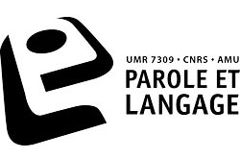Software and materials developped by the LPL
Computerized devices for perception tests
The LPL has a long research activity in auditory perception and for that it has recognized expertise in the development of numerous test management tools.
|
PERCEVAL (PERCeption EVALuation Auditive & Visuelle) is a computerized device for auditory and visual perception tests developped by the LPL. It provides a complete environment for the preparation, configuration, procurement and collection of experience data.
PERCEVAL allows to build experiments where the subject is exposed to a series of visual and / or audio stimuli. It is therefore specially adapted for the study of the perception of speech and language. |
 |
EMAA (Eye Movement Analysis and Acquisition) : this software allows to pilot in real time eye movement experiments in children from the system
EYELINK 2 and to process the collected data.
Physiological investigation of speech production
 |
EVA (L’Evaluation Vocale Assistée) is a system for the diagnosis of vocal pathologies. It is based on the study of most parameters of speech production: sound, pitch, voice intensity, airflows, pressures, etc. Equipped with numerous sensors allowing these measurements, it allows to refine the diagnosis of the practitioner, to follow a surgical intervention, a pharmaceutical treatment or a reeducation. Current studies focuse on complex clinical situations, particularly in Parkinson's disease and vocal forcing, which are "difficult" models for measure and contribute to refining and validating procedures. |
History: The EVA system was designed at the request of ENT practitioners and neurologists. This is a typical example of the transfer of research techniques (Physiologia station) to a specific (medical) application. After an intermediate period of predistribution, it is marketed by
SQLab.
Following the positive conclusions of the European action VALUE, a family of devices covering all ENT, phoniatric, laryngological and neurological activities is being developed to meet all clinical levels (research in university hospital centers, clinical routine ENT, rehabilitation, speech therapy etc.) (
B. Teston et al 1996).
Editing, manipulating and processing speech signals
Observation, editing, processing and labeling of signals has always been a major technical concern for a laboratory which is studying large masses of acoustic and physiological signals. Two editors are distributed:
|
PHONEDIT is a signal editor developed for voice and speech research. It is used to visualize, segment, mark, measure and process acoustic, aerodynamic, palatographic and kinesiographic parameters.
PHONEDIT is able to read the majority of files from different computer systems used by phoneticians. It is available on the lab server as a free, downloadable version.
A new version integrating visual sources and allowing synchronization
different sources of data is being developed. |
 |
EMATOOLS is a toolbox under Matlab for the processing of electro-magnetoarticulography and electro-palatography data.
Communication aid
 |
PCA or Plateforme de Communication Alternative is a software to help verbal or non-verbal communication. The software proposes several solutions adapted to the communication capacities and to the degree of motricity of the user:
- Oral communication in writing
- Icon-based non-verbal communication
- Accessibility mode by keyboard, mouse or scroll
- Motion sensors to control the interface
|
The PCA equips individuals, professionals of the medico-social sector and reception facilities. The PCA was designed and developed within the LPL. Distributed by Aegys from 2003 to 2011, PCA software is now
freely available.
Phonetic annotation
| SPPAS (SPeech Phonetization Alignment and Syllabification) is a software that automatically or semi-automatically produces phonetic annotations that include segmentation into sentences, words, syllables and phonemes from sound files and their transcription. |
 |
Prosody
 |
PROSODIA is a software to help the learning of the prosody of English (extension
possible to other languages or to re-education). |















